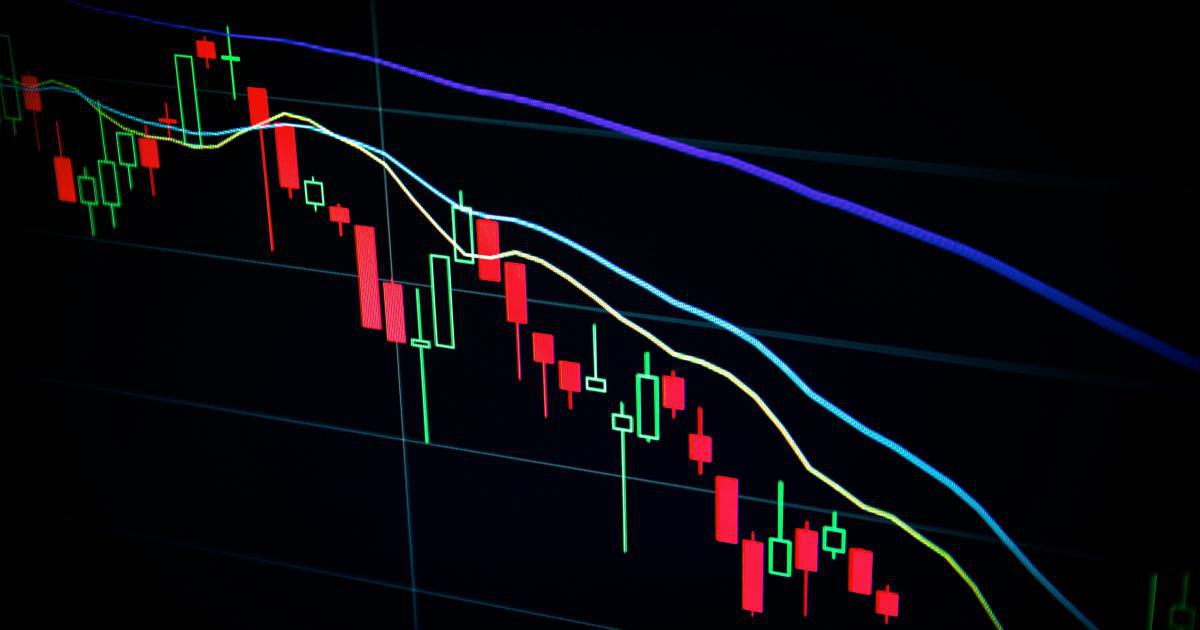10 Effective Trading Tutorials for Beginner Strategies

Welcome to our detailed guide on 10 effective trading tutorials for beginner strategies. Whether you’re stepping into the world of finance for the first time or seeking to solidify your trading foundation, these comprehensive tutorials will equip you with the knowledge and actionable insights to navigate the markets. In this guide, we will explore various trading strategies, elaborate on risk management, and provide real-world examples that illustrate successful trading techniques. Our engaging approach ensures that even those unfamiliar with the jargon can grasp the essential concepts and start trading with confidence. The trading tutorials discussed here are designed to be clear, structured, and practical, offering you a smooth introduction into a field where every decision counts.
Trading education is a continuous journey, and every trader’s path is unique. With an ever-evolving market landscape, learning and adapting is crucial. In this article, you will find tutorials that delve deep into technical analysis, risk management, and the psychological aspects of trading. From understanding candlestick charts to mastering algorithmic trading strategies, we are committed to providing you with a robust educational resource that can be referred to at any stage of your trading career.
1. Introduction to Market Dynamics
Understanding market dynamics is the cornerstone of any successful trading strategy. In this section, we discuss the basic forces that move financial markets, including supply and demand, investor psychology, and global economic indicators. As a beginner, the challenge often lies in deciphering market signals that provide clues about potential reversals or continuations in trend. Recognizing these signals early on can give you a competitive edge and reduce the risk of significant losses.
One pivotal aspect covered in this module is technical analysis. Technical analysis involves reviewing historic price data to predict future price movements. This tutorial breaks down various tools and indicators, such as moving averages, RSI, and MACD, to help beginners interpret chart patterns accurately and develop a systematic trading approach.
A key takeaway for novice traders is the importance of context. Charts do not exist in a vacuum; external economic news and events significantly impact price action. By integrating technical analysis with an understanding of market sentiment, beginners can build a more holistic trading strategy that combines quantitative signals with qualitative insights.
Real-world examples are abundant in this tutorial. For instance, consider how global geopolitical events influenced the oil market, leading to rapid price fluctuations. Such case studies are invaluable in illustrating how theoretical concepts apply in dynamic market conditions, reinforcing the notion that effective trading is both an art and a science.

2. Trading Tutorials: The Fundamentals of Candle Patterns
Understanding candlestick charts is essential for anyone starting their trading journey. Candlestick patterns provide visual cues that can indicate potential market reversals and continuations. This section is dedicated to teaching beginners how to read and interpret these patterns effectively.
2.1 What Are Candlesticks?
Candlesticks are graphical representations of price action within specific time periods. Each candlestick provides insights into the open, high, low, and close prices during that interval. The body of the candlestick provides a direct indication of whether the price moved upward or downward during the period, while the wicks reveal the price extremes. By analyzing these details, traders can infer market sentiment and potential price targets.
2.2 Key Candlestick Patterns for Beginners
Some of the critical candlestick patterns that will be discussed in these trading tutorials include:
- Doji: Indicates market indecision.
- Hammer: Suggests a potential bullish reversal.
- Shooting Star: Signals a bearish reversal in an uptrend.
For every pattern, we illustrate real-market instances, supporting each explanation with historical charts. Included in the tutorial are interactive case studies where learners can simulate trades based on detected patterns, thereby reinforcing their learning through practice.
2.3 Practical Application in Live Trading
After theoretical instruction, this section offers actionable steps. Beginners are encouraged to set up their trading platforms to practice identifying candlestick patterns in real time. By using demo accounts, traders can experiment risk-free, applying the trading tutorials’ principles to refine their strategies until they are comfortable transitioning to live markets.
By the end of this section, you will have a solid understanding of how candlestick patterns inform market sentiment and provide actionable signals. These tutorials integrate analytical techniques with day-to-day trading decisions, ensuring that you can apply theory to practice effectively.
3. Trend Analysis and Moving Averages
Trend analysis is a vital element in any trading strategy, as it helps traders identify the general direction of the market movement over a period. In this tutorial, you will learn how to use moving averages to detect trends and potential reversals.
3.1 The Importance of Moving Averages
Moving averages dampen the noise in price fluctuations, offering a clearer view of the market trend. Beginners often start with two primary types: the Simple Moving Average (SMA) and the Exponential Moving Average (EMA). This tutorial compares both:
- SMA provides a straightforward average of prices over a designated period.
- EMA gives more weight to recent prices, offering a more sensitive indicator of trends.
3.2 Incorporating Moving Averages in Your Strategy
A common application is the moving average crossover strategy. In this approach, a short-term average crossing above a long-term average signals a bullish trend, while a downward crossover indicates bearish momentum. Demonstrated through historical chart analysis, this tutorial breaks down the exact steps to identify crossover points using popular trading platforms.
3.3 Case Study: Trend Following in Action
Imagine a scenario where a stock has been trading sideways for months before a sudden burst of activity. Using moving averages, you can detect the early signs of a trend change. This real-world example showcases how moving average techniques have yielded significant profits when applied meticulously.
To further illustrate these concepts, our tutorial provides interactive exercises that simulate different market conditions. By practicing these strategies, beginners become familiar with the nuances of trend analysis, building a more robust approach to trading.

4. Momentum Trading: Capturing Short-Term Moves
Momentum trading is all about capitalizing on short-term price movements. Unlike long-term investors who focus on fundamentals, momentum traders rely on patterns and market sentiment to make quick decisions.
4.1 Understanding Momentum
The concept of momentum revolves around the idea that stocks which are moving in one direction will continue to do so for a short period. This tutorial explains various momentum indicators, such as the Relative Strength Index (RSI) and stochastic oscillators. They serve as tools that help traders identify strength and weakness at different points in the market cycle.
4.2 Strategies for Successful Momentum Trading
In this section, we detail several actionable strategies for momentum trading:
- Breakout Strategy: Identify when a stock moves outside established support or resistance.
- Pullback Strategy: Enter trades on temporary pauses in a strong trend.
Using carefully selected examples and statistical evidence, we explain how each strategy plays out in real trading environments. This analysis helps beginners grasp when to enter and exit trades to maximize profits and minimize losses.
4.3 Risk Management for Momentum Traders
Momentum trading can be highly rewarding but also risky if not managed properly. Therefore, our trading tutorials emphasize risk management techniques such as setting stop-loss orders and defining profit channels. Case studies reveal scenarios where disciplined risk management saved traders from significant downturns, underlining the importance of protecting your trading capital.
The actionable steps provided in this tutorial guide the reader through technical setups, chart reading, and psychological preparedness essential for successfully managing fast-paced trades. With chart examples and step-by-step instructions, you’re encouraged to adopt these practices before implementing them in live markets.

5. Swing Trading: Balancing Risk and Reward
Swing trading bridges the gap between day trading and long-term investing. It seeks to capture gains over several days or weeks, leveraging market “swings” where price reverses periodically within a trend.
5.1 Principles of Swing Trading
The central idea of swing trading is to identify points where a market is likely to reverse temporarily before continuing on its overall trajectory. This trading tutorial discusses the importance of patience in waiting for proper swing confirmations. One critical technique involves using technical indicators such as the Bollinger Bands and oscillators to detect when the market is overextended.
5.2 Developing a Swing Trading Strategy
This section walks you through setting up your swing trading strategy:
Identify the trend using moving averages.
Look for swing lows and highs.
Utilize technical indicators to confirm potential reversals.
Each step is analyzed with live market examples, showing how historical data validates these strategies. Additionally, we provide guidance on how to set entry and exit points, ensuring that risk is minimized while taking advantage of market swings.
5.3 Risk-Reward Considerations
One of the key reasons swing trading is popular among beginners is its balanced risk-reward ratio. Here, our tutorial articulates how to assess risk by adjusting position sizes and using trailing stops. Detailed scenarios demonstrate proper risk allocation, ensuring that even during volatile market swings, your trading strategy remains robust.
Swing trading requires a blend of technical proficiency and psychological resilience. The content in this section draws from seasoned traders, imparting valuable lessons learned from years of market experience. The focus is on building both analytical skills and emotional discipline.
6. Scalping Strategies for Quick Profits
Scalping is one of the most energetic trading strategies, aimed at taking numerous small profits on minor price changes throughout the day. This tutorial is designed for beginners who are comfortable with rapid decision-making and managing multiple trades.
6.1 What Is Scalping?
Scalping involves the execution of quick trades based on short-term market movements. The underlying idea is to profit from small price gaps created by order flows or spreads. This section emphasizes the importance of timing and agility, as a delay of mere seconds can affect the outcome of a trade.
6.2 Tools and Platforms for Effective Scalping
Given its fast-paced nature, scalping requires a robust trading platform that supports rapid order execution and minimal latency. Our trading tutorials highlight various platforms popular among scalpers, along with their unique features such as direct market access and real-time data feeds.
6.3 Practical Scalping Tactics
For scalpers, precision is paramount. The tutorial outlines several actionable steps:
- Employing Level II quotes: Gain a deeper visual overview of the order book.
- Using one-click trading interfaces: Reduce the time lag in executing orders.
- Setting precise stop-loss and take-profit orders: Secure quick profits while protecting against sudden reversals.
Real-world examples are provided throughout this section. We analyze trading sessions where scalping tactics have effectively exploited minute-to-minute market fluctuations. The emphasis is on continuous practice and refinement of techniques, as well as maintaining strict discipline—imperative traits for success in scalping.
The detailed risk management guidance in scalping highlights how limiting exposure to a few seconds per trade can significantly improve a trader’s overall performance. With the high-frequency nature of scalping, each successful trade ultimately contributes to a cumulative profit, making meticulous strategy adherence critical.
7. Algorithmic Trading Basics
In the digital age, algorithmic trading is a powerful tool that automates trading decisions based on pre-set rules. This tutorial introduces beginners to the concept of algorithmic trading and demonstrates how basic coding knowledge can help you develop trading algorithms.
7.1 Introduction to Algorithms
Algorithmic trading relies on mathematical models to execute orders at optimal prices. In this section, our trading tutorials break down the logic behind creating simple algorithms, explaining terms like backtesting, forward testing, and high-frequency trading. We'll illustrate how even basic algorithms based on moving average crossovers or price breakouts can produce consistent results.
7.2 Building Your First Trading Bot
Step-by-step instructions guide you through the process of creating your first trading bot using popular platforms and programming languages such as Python. We cover:
- Data collection: How to source reliable market data.
- Strategy formulation: Translating trading ideas into algorithmic rules.
- Implementation: Coding a basic bot and running simulations.
Real-world scenarios showcase traders who transitioned from manual trading to algorithmic systems, using small prototypes that evolved into sophisticated tools. This tutorial underscores the importance of continuous optimization, where bots are regularly adjusted based on performance metrics.
7.3 Evaluating and Refining Your Strategy
No algorithm is perfect from the start. Therefore, this section discusses the nuances of strategy optimization. Beginners learn how to interpret backtesting results, identify common pitfalls, and fine-tune algorithms for improved performance. Techniques such as walk-forward analysis are introduced to ensure that your algorithm remains adaptive and effective under different market conditions.
By embracing algorithmic trading, beginners can automate repetitive tasks and reduce the emotional burden of trading. The emphasis is placed on long-term strategy development and iterative improvement, ensuring that your automated systems can scale alongside your growing expertise.
8. Risk Management: Protecting Your Capital
Effective risk management is the foundation of any sustainable trading plan. Without proper risk controls, even the best strategies may falter. This section of our trading tutorials delves deeply into techniques to protect your capital and ensure that each trade aligns with your overall risk tolerance.
8.1 The Importance of a Solid Risk Management Strategy
Risk management in trading is not just about setting stop-losses; it encompasses position sizing, diversification, and even understanding market volatility. This tutorial explains why risk management is critical and offers a variety of techniques to safeguard your investments.
8.2 Defining Your Risk Appetite
Before placing a trade, it’s essential to determine how much capital you are willing to risk. This section provides practical guidelines on defining your risk appetite. By employing methods like the 1% rule (risking only 1% of your capital on a single trade), beginners learn how to withstand market downturns without significant losses.
8.3 Tools and Techniques for Risk Mitigation
From using stop-loss orders to diversifying across asset classes, this part covers actionable techniques that can be implemented immediately. It also reviews advanced methods such as portfolio hedging and the use of options to reduce overall risk exposure. Interactive scenarios help illustrate how these techniques perform under various market conditions, solidifying the importance of a disciplined trading plan.
This comprehensive overview of risk management ties together the learnings from previous tutorials, demonstrating that effective trading is as much about avoiding losses as it is about capturing gains. The integration of risk management strategies ensures that your trading journey is both profitable and sustainable over the long term.
9. Developing a Winning Trading Mindset
Psychology plays an indispensable role in trading. Often, the difference between success and failure lies in managing emotions and maintaining discipline under pressure. This tutorial addresses the psychological aspects of trading, offering strategies for developing and maintaining a winning mindset.
9.1 Emotional Discipline in Trading
Emotional impulses can lead to poor decision-making. We explore the common psychological pitfalls that traders face—such as fear, overconfidence, and impulsivity—and provide actionable advice on how to mitigate these emotions. Techniques like mindfulness, journaling, and pre-trade routines are discussed as powerful tools for maintaining a balanced approach.
9.2 Learning from Losses and Mistakes
Every trader, regardless of experience, faces losses. Instead of being discouraged, successful traders use losses as learning opportunities. This section includes real-life anecdotes and interviews with seasoned traders who share how they turned setbacks into stepping stones for future success. The tutorials emphasize the importance of having a post-trade review process to analyze mistakes objectively and adjust future strategies accordingly.
9.3 Building Confidence Through Continuous Education
A informed trader is a confident trader. Ongoing education and the willingness to adapt are critical components of a robust trading mindset. This part of the tutorial highlights resources, reading materials, and communities that provide support and learning opportunities. The content motivates beginners to persist through challenges and gradually refine their mental strategies in tandem with their technical skills.
By integrating psychological training with technical analysis, this tutorial aims to create a well-rounded trader who can handle market volatility with poise and self-assurance. It reinforces the concept that trading mastery is an evolving journey where both the mind and the methods must grow continuously.
10. Putting It All Together: Crafting Your Trading Plan
The final tutorial of our series is dedicated to developing a comprehensive trading plan. This plan integrates all of the elements discussed in previous sections—market analysis, technical strategies, risk management, and psychological preparation—into one cohesive framework.
10.1 Elements of a Comprehensive Trading Plan
A robust trading plan should include:
- Clear entry and exit criteria.
- Defined risk management rules.
- A framework for continuous performance evaluation.
- Guidelines for adapting to changing market conditions.
We break down each element with detailed examples and worksheets to help you draft a personalized plan that suits your risk profile and market understanding.
10.2 Step-by-Step Guide to Developing Your Plan
Our trading tutorials offer a structured path:
Analyze historical performance and identify key trends.
Formulate specific, measurable trading objectives.
Set realistic targets for gains and acceptable losses.
Develop a routine for regular strategy reviews and updates.
This systematic approach ensures that every facet of trading—from market reading to psychological resilience—is considered. Practical checklists and flowcharts are provided to facilitate the drafting process, ensuring nothing is overlooked.
10.3 Continuous Improvement and Adaptability
Markets are inherently dynamic; therefore, a static plan will eventually become obsolete. This tutorial emphasizes the importance of iterative improvements. Structured feedback loops, performance analytics, and scheduled plan reviews are critical elements that allow you to adapt over time. By regularly revisiting and refining your trading plan, you ensure that it remains aligned with evolving market trends and personal growth as a trader.
In summary, this final section consolidates everything you’ve learned, encouraging you to build a robust, flexible trading plan that evolves with your experience. With this comprehensive blueprint, you not only enter the markets with confidence but also maintain the discipline required for long-term success.

Conclusion
The world of trading is as challenging as it is rewarding, and these 10 effective trading tutorials for beginner strategies are crafted to equip you with a versatile, in-depth understanding of market mechanisms and practical trading approaches. From chart analysis and trend following to algorithmic trading and psychological resilience, each tutorial builds upon the other to form a comprehensive learning path.
The essence of trading success lies in the continuous pursuit of knowledge, rigorous practice, and the development of a disciplined trading plan. By integrating technical analysis with strong risk management and a resilient mindset, you put yourself in the best possible position to navigate the unpredictable dynamics of financial markets.
Real-world examples and interactive exercises featured throughout these trading tutorials offer insights that are both practical and inspiring. Whether you’re delving into candlestick patterns for the first time or automating your trades through algorithms, the key is to remain patient and persistent.
In closing, let this guide serve as a foundational resource on your trading journey. Embrace every lesson, apply the actionable strategies, and continuously refine your approach. The market rewards those who are well-prepared—and with the knowledge encapsulated in these tutorials, you are well on your way to becoming a successful trader.
Happy Trading!
Unlock Trading Potential with Automated Analysis
Tired of missing opportunities and making suboptimal trading decisions? TrendSpider's cutting-edge platform automates complex technical analysis, saving you time and reducing human error.
With multi-timeframe analysis, dynamic alerts, backtesting, and customizable charting, you'll gain a competitive edge in identifying trends and making informed trades across global markets.
Unleash the Power of Automated Trading Analysis
Are you struggling to keep up with the fast-paced trading world? TrendSpider empowers you with cutting-edge tools for optimal strategy execution.
Our automated technical analysis suite eliminates guesswork, backtests strategies, and delivers real-time alerts, saving you valuable time and effort.


